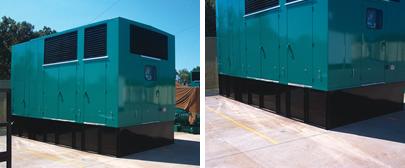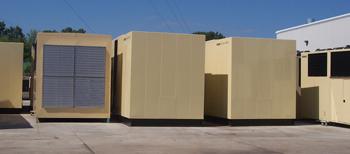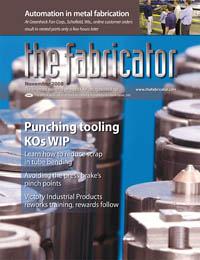Editor-in-Chief
- FMA
- The Fabricator
- FABTECH
- Canadian Metalworking
Categories
- Additive Manufacturing
- Aluminum Welding
- Arc Welding
- Assembly and Joining
- Automation and Robotics
- Bending and Forming
- Consumables
- Cutting and Weld Prep
- Electric Vehicles
- En Español
- Finishing
- Hydroforming
- Laser Cutting
- Laser Welding
- Machining
- Manufacturing Software
- Materials Handling
- Metals/Materials
- Oxyfuel Cutting
- Plasma Cutting
- Power Tools
- Punching and Other Holemaking
- Roll Forming
- Safety
- Sawing
- Shearing
- Shop Management
- Testing and Measuring
- Tube and Pipe Fabrication
- Tube and Pipe Production
- Waterjet Cutting
Industry Directory
Webcasts
Podcasts
FAB 40
Advertise
Subscribe
Account Login
Search
Getting the weld right the first time
Victory Industrial Products LLC reworks its training program to improve quality efforts
- By Dan Davis
- November 25, 2008
- Article
- Shop Management

Whereas many companies specialize in fabricating a variety of fuel storage tanks, Victory Industrial Products LLC has built a business dedicated to fabricating sub-base tanks for generators and the accompanying housings. These rectangular tanks not only store fuel, but also act as a base for the generators and housings.
Yes, Victory, there is a quality clause. Well, it's not specifically stated as a quality clause in the employee handbook, but it's understood by the 170 employees who comprise Victory Industrial Products LLC, Batavia, Ohio. If they don't get the quality right in the design and fabrication of custom enclosures, fuel tanks, and accessory equipment for standby and backup power generators, they could be putting the company at risk for future success.
Victory got a taste of this lesson in 2007 as it struggled to keep up with rapidly growing business opportunities. The company worked hard to stay on top of new orders while at the same time watching past-due orders climb.
Change for the better occurred in May 2007. The company moved into a new, 120,000-square-foot facility, out of its cramped, 26,000-sq.-ft. home, and new blood was infused into the organization. WHI Capital Partners, a Chicago-based private equity group, became part-owner of Victory, and Bob Carter, a 30-year veteran of business and operations management, took the helm as company CEO; both are big proponents of lean manufacturing principles for all aspects of the business.
That meant even the welding area, where workers take pride in their work and believe the "black art" should not be tampered with. Apparently, even welding is not immune from improvements created by formalized processes.
Some Outside Help
Carter didn't wait too long to get to work. He met with consulting firm Definity Partners the first week on the job. The consultancy, which calls itself a business improvement firm, previously had helped a WHI sister company, AddisonMckee.
Early on Definity Partners recognized that concentrating on department efficiency wasn't the correct game plan. Definity needed to take a look at Victory's management systems.
The first step was implementation of a new master scheduling process, basically the systems and tools used to regulate work-in-process (WIP) on the shop floor. The new scheduling approach gave Victory the opportunity to schedule jobs on a daily or weekly basis, if needed, and to project more accurately the needed labor, material, and manufacturing resources to get the job done. In short, Victory management had a better idea about what was happening on the shop floor.
With WIP eliminated in the enclosure assembly department, the team took on the bottleneck in engineering.
It should be noted that the packages—the Victory term for the combination of fuel storage tanks and generator enclosures—the company manufactures today are much more complicated than those the company first made in 1989. The engineering effort and quality requirements have increased considerably since those days.
"The dynamics of this industry started to change a few years back and continue to do so from the standpoint that there is more demand for more high-performance products. We are talking about seismic resistance, sound attenuation, and emissions," said Dave Koester, Victory's director of sales.

Victory Industrial Products also offers in-house painting for its products. The company has three paint booths to keep up with surges in orders for its tanks and housings.
"To develop a real high-performance product, you need to excel in those areas."
The market continues to evolve very rapidly. For instance, requests for fire suppression tanks as defined by the Underwriters Laboratories UL 2085 label are on the rise, especially as more governing bodies adopt the International Building Code that classifies most generator installations with fuel storage as hazardous. These UL 2085 fire-resistant tanks are designed to withstand prolonged exposure to extreme temperature of the primary tank and keep the contents below combustible temperatures. The tanks accomplish this with the inclusion of a lightweight, concretelike mix between the double-walled tanks that hardens to provide the thermal protection. Typically, the walls of Victory containment tanks are fabricated from 10-gauge carbon steel and the subframe walls from 7-gauge steel, although other materials are used occasionally in both instances.
To ensure proper product designs were making their way to the shop floor, the engineering department adopted their own scheduling tools. Additional engineers were hired, and the work load was distributed more evenly to encourage an increase in design capacity.
That led to a closer focus on the shop floor. Victory company and Definity project managers decided a reorganization was needed to simplify the work flow and reduce time wasted from moving jobs across the facility from one manufacturing area to another.
Production was split into a line for enclosures and two lines for fuel tanks—small (800 gallons and smaller) and large (more than 800 gallons). The enclosure line and the fuel tank lines are fed by two separate fabrication departments. This required about $750,000 in equipment investment, which included a FASTI folding machine and a Messer MG Systems & Welding plasma cutting machine, to balance out fabrication capabilities in each of the areas.
The lines are marked clearly to let people know what is taking place at each stop. For instance, the tank line has stops for tack-up, tank weld, basin weld, and final assembly. All the lines then feed to the paint area and, ultimately, final assembly, where the generator and electric components are married with Victory's fabricated components.
With the floor operating more smoothly and the scheduling software more accurately coordinating production activities, the team turned their attention to the welding department.
Back to School
"The need for welding help was always there," said Definity Partner's founder and Chief Innovation Officer Ray Attiyah, "but it kind of highlighted itself in the July time frame. So once you stabilize the assembly and you have a better flow, a better layout, and better scheduling, this kind of surfaced as a barrier to making significant changes."
Victory's Carter identified that barrier: "As we added new people, we saw an increase in the number of first-time pass leaks related to welding. So we wanted to come up with a training program and process that allowed us to reduce that for not only the new employees, but also for the older employees."
The first step of the quality improvement process concentrated on assessing the welders. This helped identify the quality welders from the subpar welders.
In some cases, according to Definity Partners' welding trainer Phil Moore, the welders had no idea that they were following bad welding practices. They either picked up the bad habits outside the job, maybe on a farm growing up, or they had a mentor at one time who reinforced welding misconceptions.
"So we basically assessed them and figured out how to get them to the next level," Attiyah said.
Before training could formally begin, everyone had to agree on what the welders would be trained to do.
"It was a matter of trying to figure out from all the different types of welds—whether horizontal, vertical, or whatever they are doing in the tank. What's the best technique that works in these areas? Then everyone agrees on that, and it was defined in the process," Carter said.
"We look at [the job] as a whole and break it down into steps and figure out the process. We determine the best way to run this particular joint on this particular product," Moore said.
During this phase, the team didn't concentrate on what a final weld bead should look like. They concentrated on the method and process that they wanted duplicated for specific weld jobs. The idea was that the right procedure would translate automatically into a better weld.
"I know there was a little skepticism from some of the senior welders who asked, 'Why are we doing this? We know how to train people ourselves,'" Attiyah said. However, the group embraced it when they understood how better-quality welds would translate into the company's ability to meet growing customer demand.
With training procedures agreed upon and documented for the first time, training was set to begin. This was no ordinary welding training course; the company didn't have the luxury of sending welders off to a nine-week course. The training—which Moore called "intense, hands-on" learning—lasted one to two weeks for each welder and was conducted while manufacturing continued at peak levels across two shifts.
All training efforts began with the basics. Moore said it began with how a person picks up a GMAW gun, how to hold the gun, at what angles the gun needs to be held, and what posture the welder needs to have during metal joining. Training continued into discussion of the welding equipment and selection of welding wire and assist gas for different welding jobs.
"Then we concentrate on making the weld better," he said.
Simultaneously, Victory made changes on the human resources end of things. Company management created four levels of welding expertise, with pay increasing accordingly. Top-level welders are the supervisors, and the rungs below that correspond to skill level of the welder.
"So the guys that are really serious about coming here and working, they can make more money," Carter said.
Training ended in December. More than 40 welders went through some sort of program. Moore was correct; the welds got better.
Weld department productivity has improved by as much as 70 percent, according to Carter. Rework related to the final quality of fuel tank leads has dropped dramatically.
The training and improved compensation also have helped keep the welders around. Employee turnover has been reduced by 71 percent.
"I think that's the hardest part for fabrication companies—they are afraid to declare that through a better process they'll get a better result," Attiyah said. "But they are able to see people come in who have welded only a few years and outperform welders who have been welding for many years. It's the process, not the black art."
Better Processes, Better Results
The overall impact of all the changes has been great. Victory improved on-time delivery from 30 percent to more than 90 percent and eliminated $4.5 million in past-due orders. The company has been able to keep up with an increase in business without adding large labor costs.
Company management expected the success to be contagious. It opened a 50,000-sq.-ft. facility in Phoenix, Ariz., to serve customers west of the Mississippi, and all of the processes, including welding procedures, put in place in Batavia will be duplicated out west.
"The process sheets, the instructions, the training programs—they are all in place. It's been very lasting," Carter said.
"If you start to see problems or occurrences happening, then you go back to the root cause and find out whether it's training or something in the process that needs to be changed. In most cases, the processes are pretty well-documented, and it likely will be more related to training issues. Somebody is deviating from the instruction," Carter added. "Before it was a bunch of different guys doing it their own way. There was no best defined process. You had too much variation really to do [quality assurance]."
In promotional materials, the company calls it "built-in quality." From Victory's point of view, that's no fabrication.
About the Author

Dan Davis
2135 Point Blvd.
Elgin, IL 60123
815-227-8281
Dan Davis is editor-in-chief of The Fabricator, the industry's most widely circulated metal fabricating magazine, and its sister publications, The Tube & Pipe Journal and The Welder. He has been with the publications since April 2002.
subscribe now

The Fabricator is North America's leading magazine for the metal forming and fabricating industry. The magazine delivers the news, technical articles, and case histories that enable fabricators to do their jobs more efficiently. The Fabricator has served the industry since 1970.
start your free subscription- Stay connected from anywhere

Easily access valuable industry resources now with full access to the digital edition of The Fabricator.

Easily access valuable industry resources now with full access to the digital edition of The Welder.

Easily access valuable industry resources now with full access to the digital edition of The Tube and Pipe Journal.
- Podcasting
- Podcast:
- The Fabricator Podcast
- Published:
- 04/16/2024
- Running Time:
- 63:29
In this episode of The Fabricator Podcast, Caleb Chamberlain, co-founder and CEO of OSH Cut, discusses his company’s...
- Industry Events
16th Annual Safety Conference
- April 30 - May 1, 2024
- Elgin,
Pipe and Tube Conference
- May 21 - 22, 2024
- Omaha, NE
World-Class Roll Forming Workshop
- June 5 - 6, 2024
- Louisville, KY
Advanced Laser Application Workshop
- June 25 - 27, 2024
- Novi, MI































